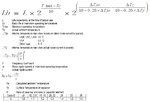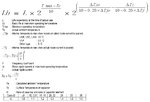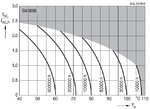T
treez
Guest
According to the 23rd page of the linked (below) electrolytic capacitor app note, equation 2-19 means that if a capacitor had virtually zero ripple current in it, then its rated life would only be twice what its life would have been if it had had rated ripple current in it for the specified time (eg 3000 hrs etc).
This cant be right. What is wrong with equation 2-19?
General Descriptions of Aluminum Electrolytic Capacitors , Nichicon...
https://www.nichicon.co.jp/english/products/pdf/aluminum.pdf
This cant be right. What is wrong with equation 2-19?
General Descriptions of Aluminum Electrolytic Capacitors , Nichicon...
https://www.nichicon.co.jp/english/products/pdf/aluminum.pdf








